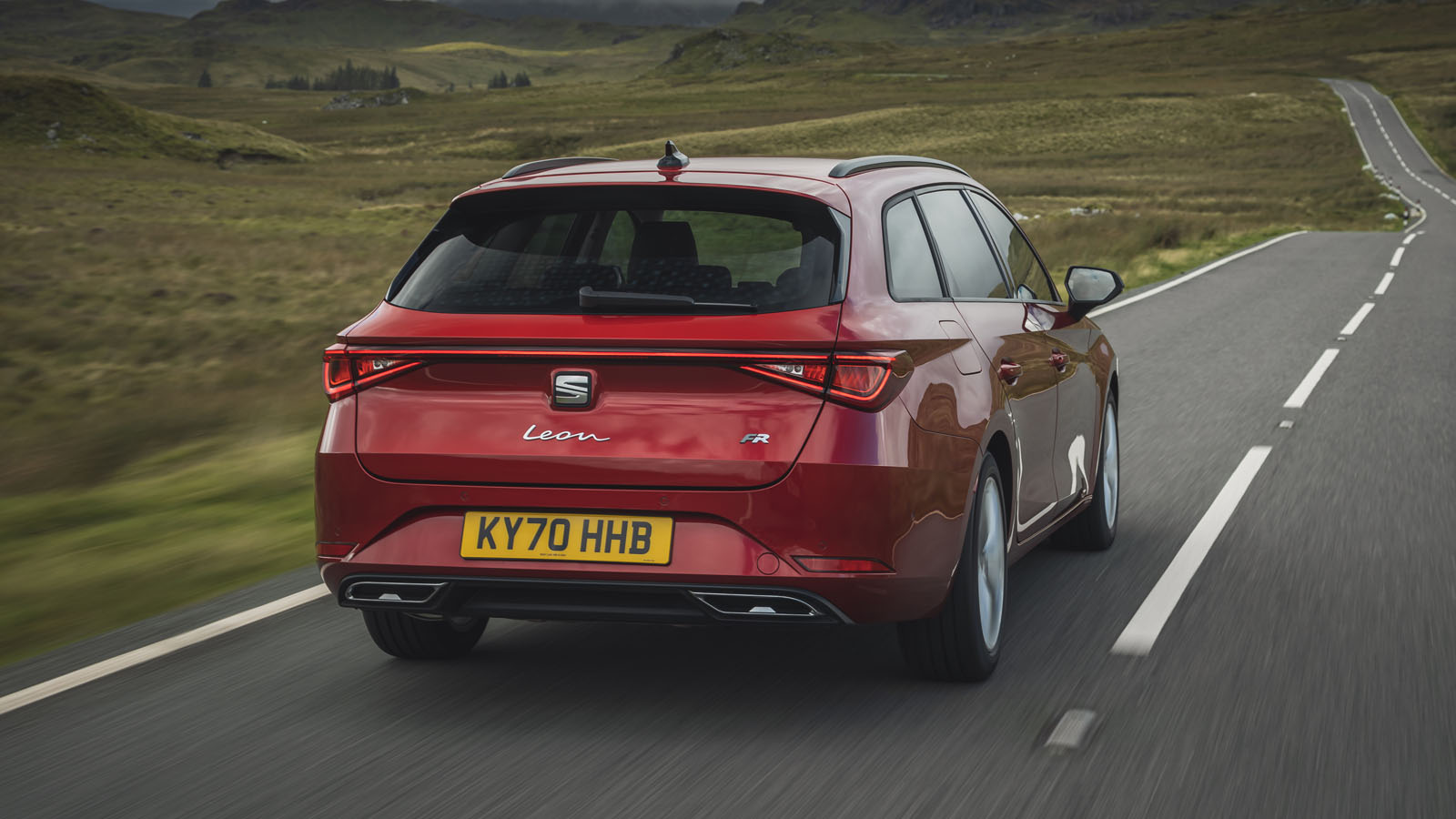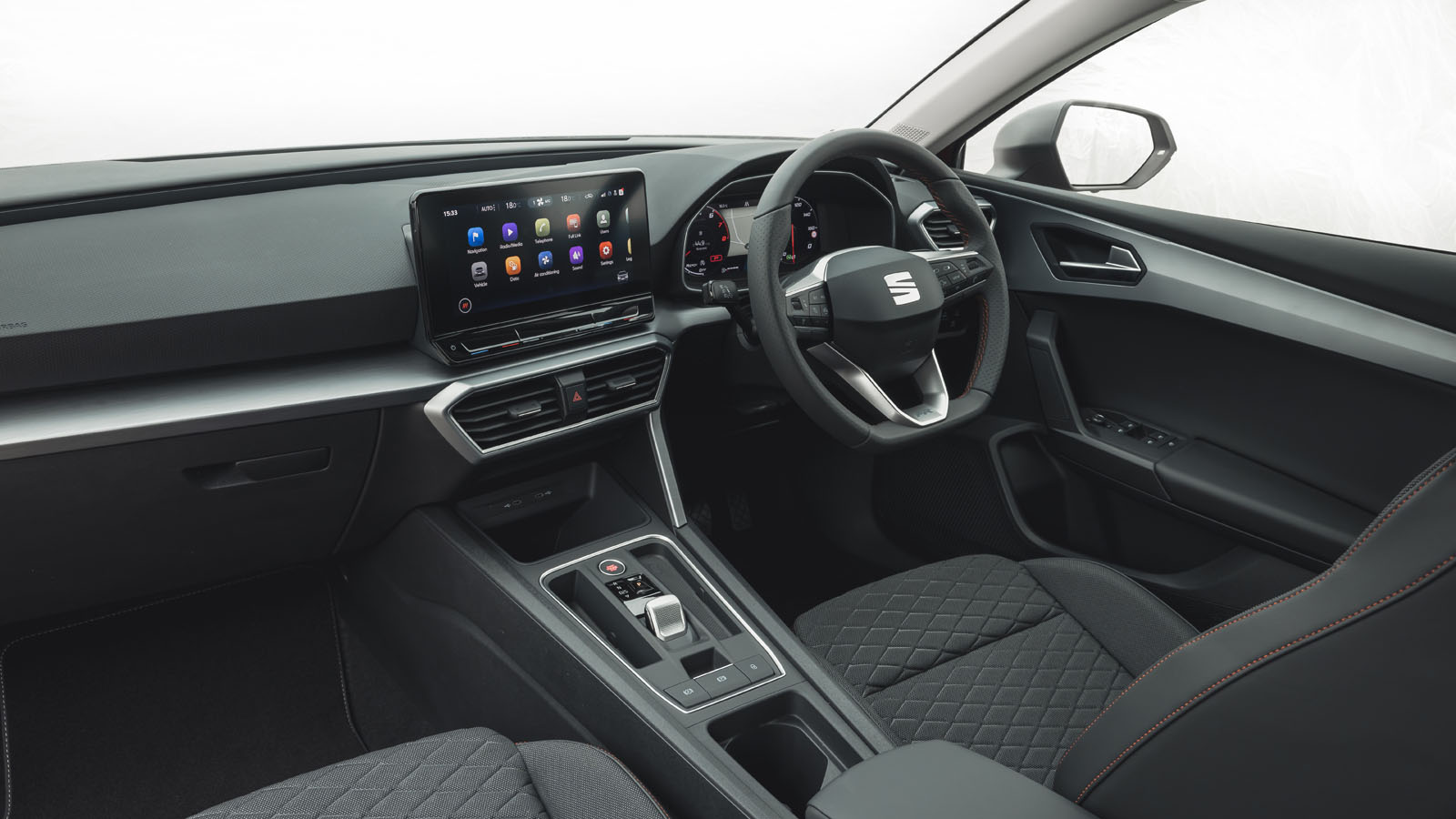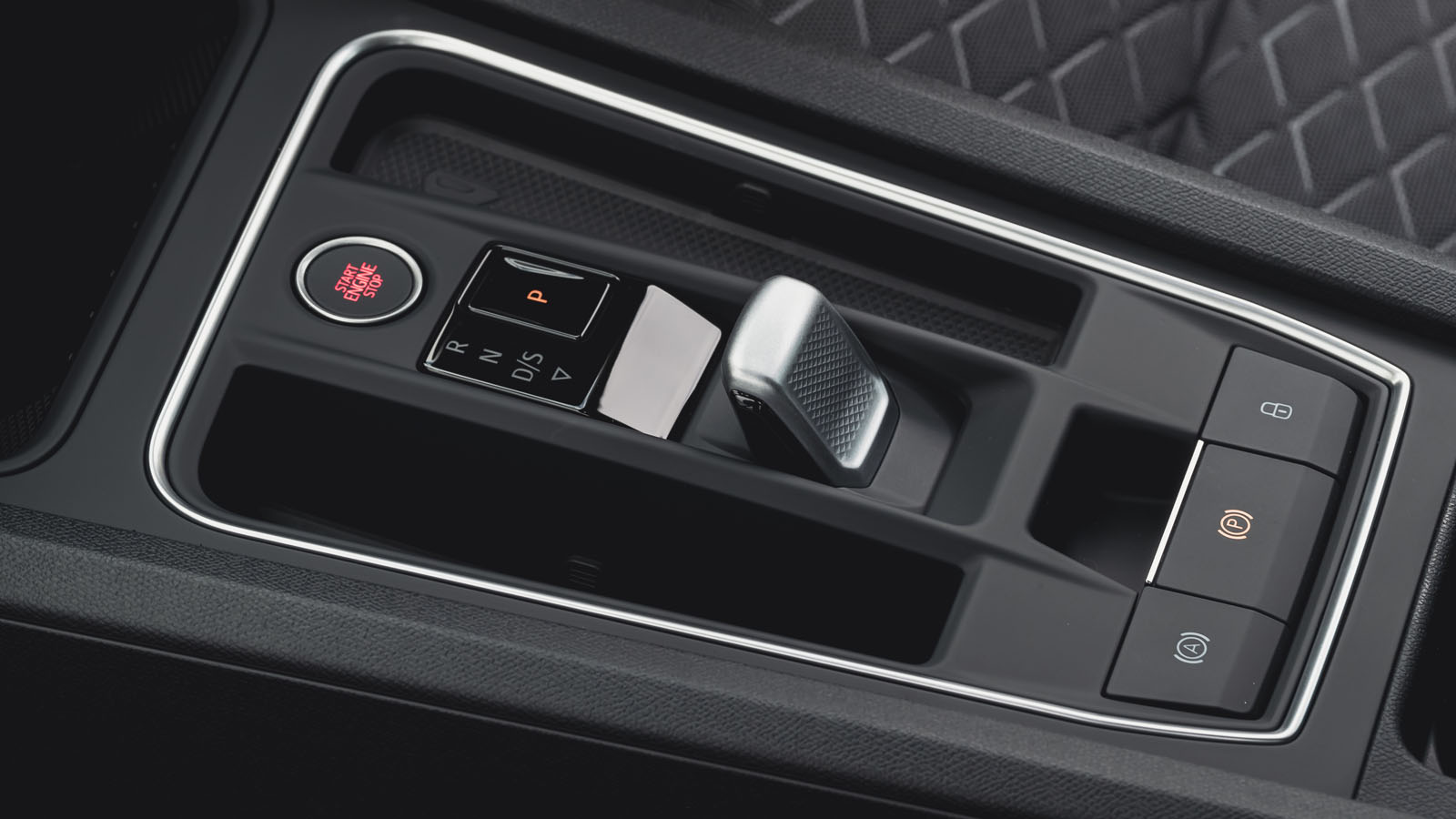
Interior
What is it like on the inside?
The Leon Estate’s boot isn’t quite as big as the Octavia’s, but only by a few litres. Either way this is still a massively practical car that ought to swallow pretty much anything a small family might throw at it, from bulky pushchairs to the weekly shop, without complaint. It’s at least as commodious as all those crossovers you’ve been looking at, maybe moreso.
There’s loads of space for passengers, too, not just their things. Adults are fine in the back, and up-front the seats are supportive and well-set, so it’s easy to find a comfortable driving position. In autos the gear lever is replaced by a little switch you flick backwards or forwards with your thumb, adding to the feeling of space.
The dashboard is the controversial bit. Because the Leon is based on the same platform as the Golf and Octavia, it shares their basic dashboard architecture (the Audi A3, which also uses this platform, does its own thing). That means few buttons – the Leon’s dashboard has none whatsoever, bar controls for the electronic parking brake and auto-hold and the engine start button.
The climate control is managed through the screen, and so too are the drive modes (Cupras get a little toggle on the steering wheel for that). Seat’s colourful user interface looks great, but it’s hardly the easiest system to use, with an at times confusing menu structure and key functions hidden in sub-menus or behind one too many prods of the screen.
Still, it feels at least as well-made in here as the Golf, and the steering wheel is a nice item that does, mercifully, have a few buttons. Not the touch-sensitive panels you get in some Golfs. The USB ports are all of the C variety, so remember your adapters.
Featured

Trending this week
- Car Review
BMW 1 Series
- Top Gear's Top 9
Nine dreadful bits of 'homeware' made by carmakers






